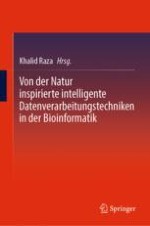2024 | OriginalPaper | Chapter
Von der Natur inspirierte Rechentechniken zur Entwicklung von Medikamenten und Therapeutika
Authors : Sarra Akermi, Abira Dey, Nicholas Franciss Lee, Ruoya Lee, Nathalie Larzat, Jean Bernard Idoipe, Ritushree Biswas, Jasbir Kaur Simak, Suparna Dey, Subrata Sinha, Surabhi Johari, Chandramohan Jana, Anshul Nigam, Sunil Jayant, Ahmet Kati, Ashwani Sharma
Published in: Von der Natur inspirierte intelligente Datenverarbeitungstechniken in der Bioinformatik
Publisher: Springer Nature Singapore
Activate our intelligent search to find suitable subject content or patents.
Select sections of text to find matching patents with Artificial Intelligence. powered by
Select sections of text to find additional relevant content using AI-assisted search. powered by
